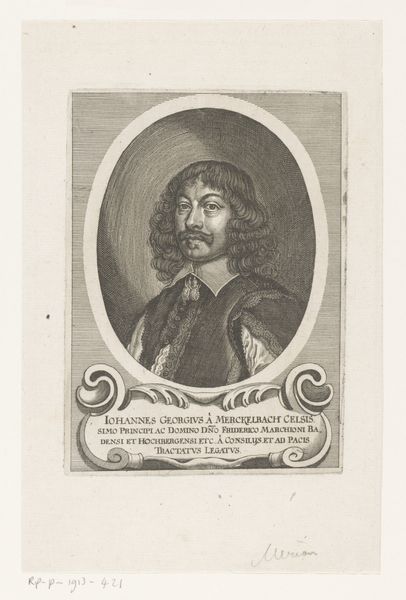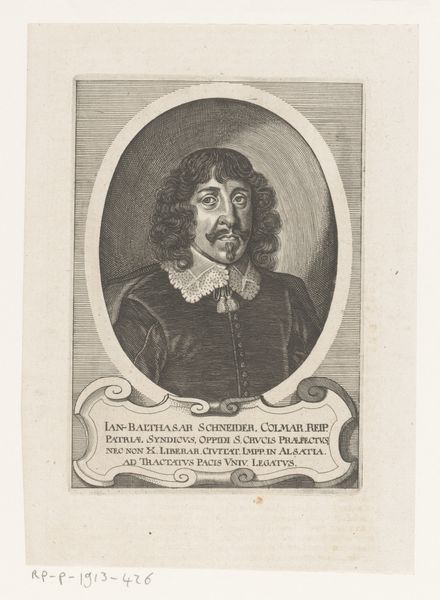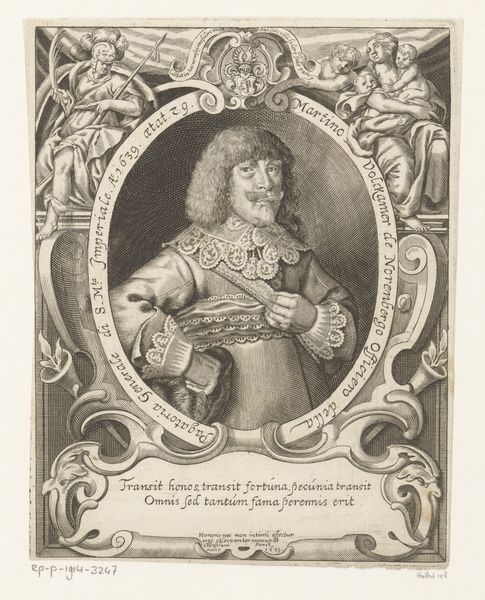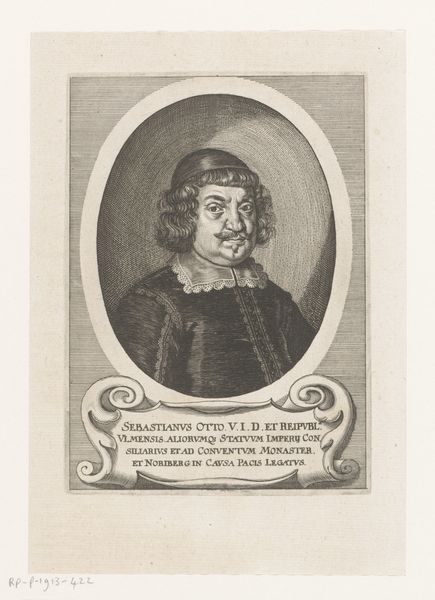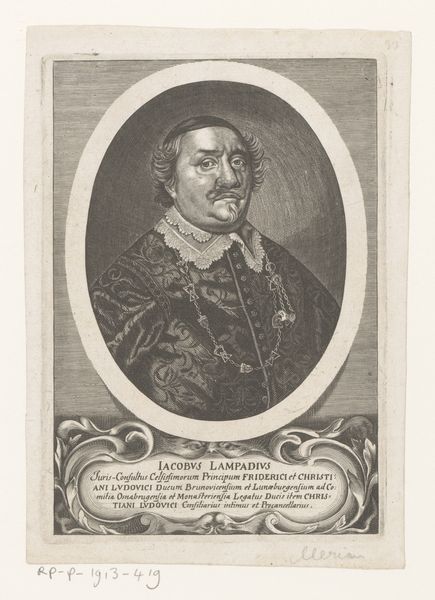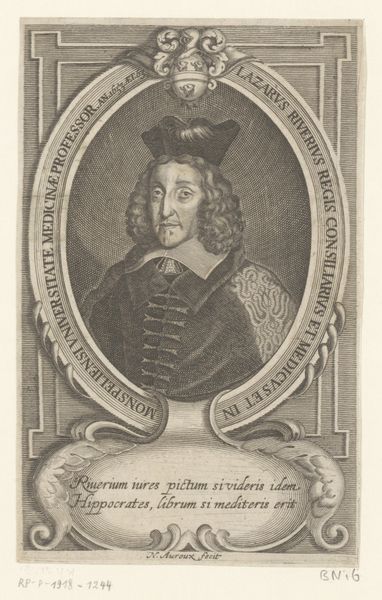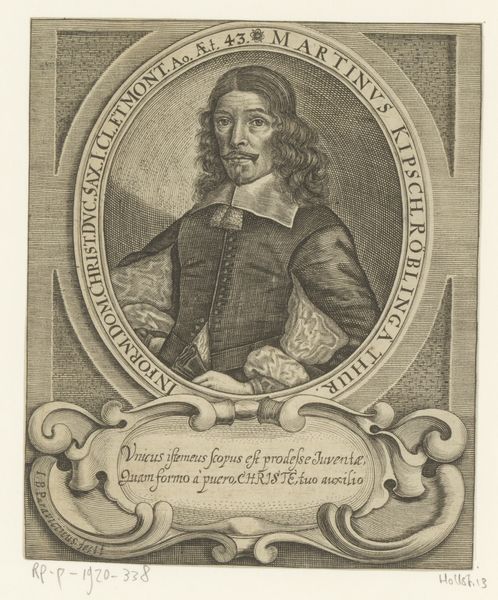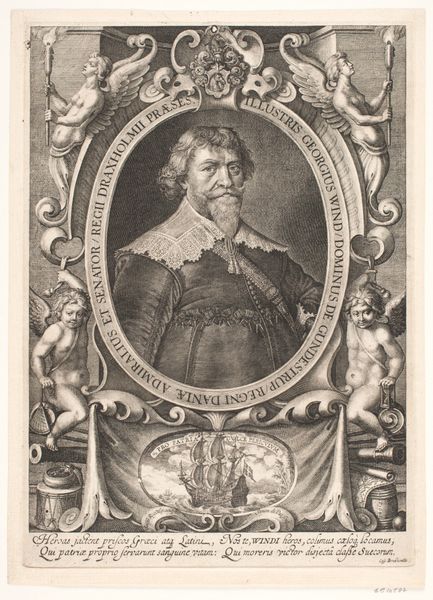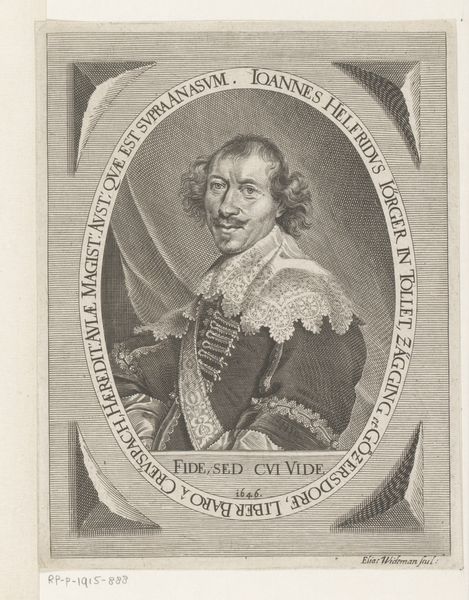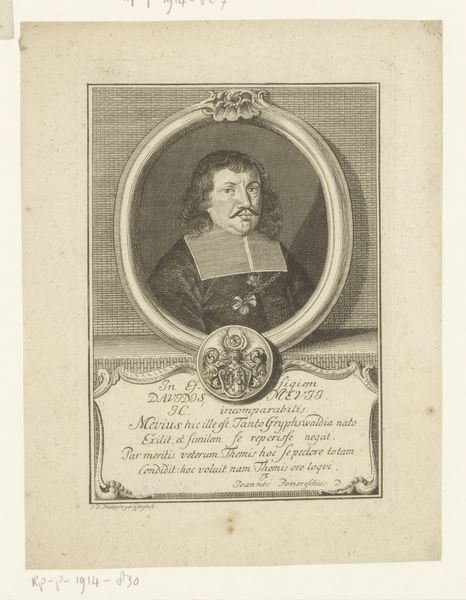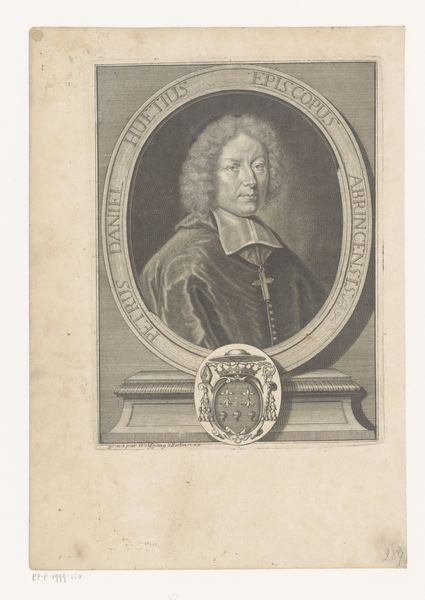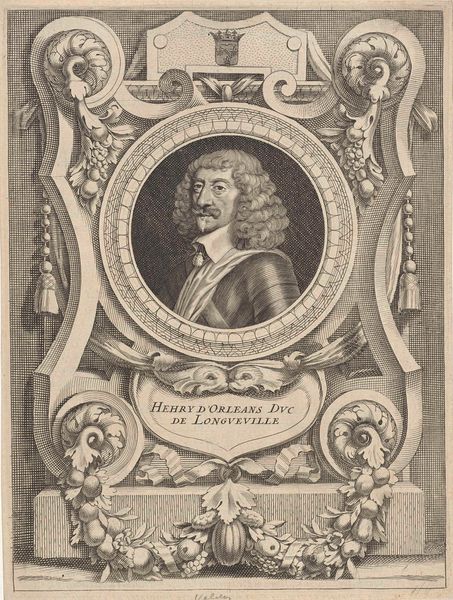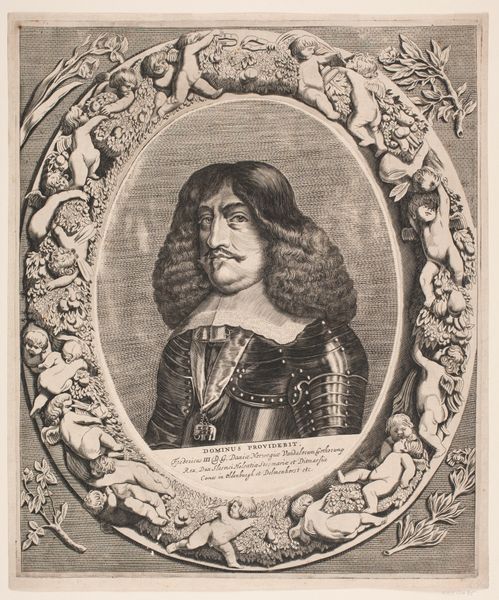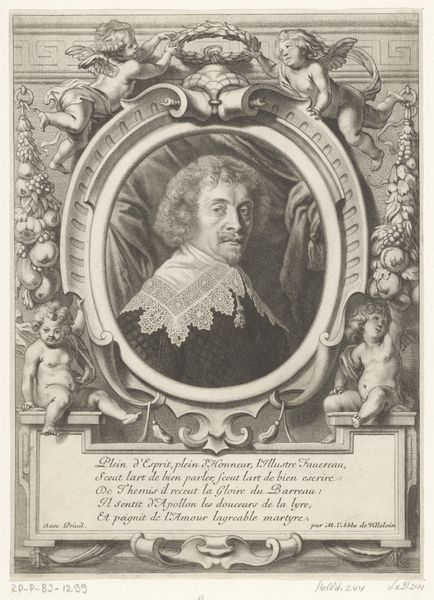
print, engraving
#
portrait
#
baroque
# print
#
caricature
#
history-painting
#
engraving
Dimensions: height 166 mm, width 135 mm
Copyright: Rijks Museum: Open Domain
Curator: This is "Portret van Martin Opitz," a Baroque engraving attributed to Johann-Baptist Paravicini, likely created between 1656 and 1676. Editor: My initial reaction is of formality, and a certain restraint, typical of portraiture, but that decorative cartouche framing Opitz and that flowy font hints at an elegance striving against the very medium that attempts to contain it. Curator: That's an interesting observation. This portrait, of course, depicts Martin Opitz, a pivotal figure in German literature. Considering Paravicini's status in his contemporary artistic landscape, it’s not only a depiction of Opitz, but also serves to memorialize his importance, situating him within a pantheon of influential figures during and after the Baroque. Editor: Absolutely. The choice of engraving itself says a lot. Printmaking democratized images, disseminating them widely, it acted as a public platform back then, not so unlike social media of our own age. By producing this print, Paravicini ensured Opitz's likeness and legacy could reach a broad audience, impacting literary discourse. Was the artist interested in making any kind of statement by framing Opitz in such an elaborate frame, juxtaposed against the somewhat drab garments he wears? Curator: I see your point. I think that while the clothing could be read as somewhat restrained, we also should not divorce this portrayal from its social context. Simplicity was often itself a demonstration of moral, not necessarily class-based, superiority, where overt displays of wealth could denote unseemly behavior or moral depravity. Editor: And of course there is that inscription. That is Latin, isn’t it? I think I can decipher some of it, like "Princeps carminis." He is hailed here as a literary giant of the German nation, quite powerful for those times! The artist uses Opitz to position and solidify specific views around national identity. How have images like this informed the social function of art? Curator: Indeed, these sorts of portraits created accessible forms of authority during a period when literacy rates and geographical access often impeded the ability to see artworks that made powerful ideological claims. As a disseminable image, therefore, portraits like this one could transcend many such barriers. Editor: It does feel, at least to me, as a work embedded within complex layers of status, power, and nation building. Curator: It is definitely something to consider.
Comments
No comments
Be the first to comment and join the conversation on the ultimate creative platform.
